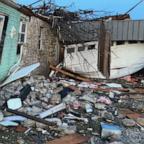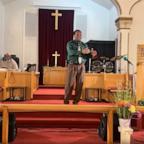Southwest Faces $10.2 Million Fine From FAA
The FAA says Southwest Airlines used 46 planes that had not been inspected.
March 7, 2008 — -- Southwest Airlines is facing the largest fine ever imposed on a passenger airline by the Federal Aviation Administration.
The FAA announced Thursday that it is proposing a $10.2 million fine against Southwest because the airline failed to do required safety checks on its older aircraft. The agency is sending a technical team to Southwest airlines on Monday to review the company's procedures.
Routine checks ensure airplanes are fit to fly, but Southwest failed to inspect 46 older Boeing 737s, six of which were later found to have cracks in them.
"In order to get a $10 million fine out of the FAA, it had to be a significant deficiency in performing maintenance," said John Goglia, a former National Transportation Safety Board member and senior vice president at Aviation Technology Solutions.
Southwest first notified the FAA last March that it had accidentally missed inspections. Some were nine months overdue. The FAA says Southwest flew more than 60,000 flights between June 2006 and March 2007 without doing the required maintenance.
Planes that miss inspections are supposed to be grounded, but the Southwest planes were not. For another nine days, the jets in question made more than 1,400 additional flights because FAA supervisors incorrectly advised the airline it was all right to keep the planes flying.
Today, the FAA's deputy associate administrator for aviation safety, Peggy Gilligan, said no FAA employee has any authority to offer an alternative to full compliance.
FAA's director of flight standards service, Jim Ballough, called the incident a failure on the part of both Southwest and the FAA that these aircraft continued to operate. He said the carrier failed to follow basic rules that require aircraft to be grounded until inspections are completed, and that FAA inspectors should have done due diligence to determine that Southwest was following the rules.
"They should have determined that aircraft were not in service," Ballough said.
In a statement, Southwest insisted that this was "never a safety of flight issue." The airline said the FAA penalty is related to "one of many routine and redundant inspections."
Southwest added it contacted Boeing to determine that the continued operation of the planes for up to 10 days, until inspections could be completed, did not pose a safety hazard.
Still, under FAA regulations, the planes should have been on the ground, not in the air, until the inspections were completed.
"Why we should we keep flying these airplanes after we knew we missed these inspections?" Goglia said. "Where was vice president of maintenance, where was the FAA, when they continued to fly these airplanes after they knew?"
The importance of inspecting older airplanes became more apparent after an older Aloha jet peeled apart in the air in 1988. It was then that the FAA realized that older planes could suffer fatigue stress and needed more frequent inspections.




